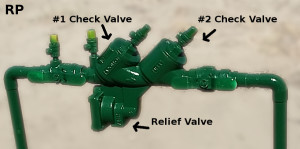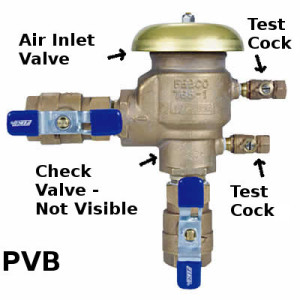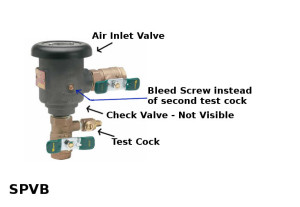Certified Backflow Testers Know, So Will You!

This page is to help backflow device owners understand some of the requirements and what a certified backflow tester is talking about when they perform the test on your backflow assembly. We have been asked by numerous clients what do those numbers on their backflow test form mean. We’ll do our best to explain.
The requirements change, slightly, over time. As the USC Foundation for Hydraulic Control and Cross-Connection publish a new edition to their manual they come up with new, or often times, improved methods for how a test should be conducted. Some of these changes will be a result of an old unnecessary concept brought to light, realized no longer needed. Other times the test procedure will change due to a new concept to make the test more accurate. Whatever the reasons are water companies enforce these new procedures for all testers.
This article won’t go into great detail as to how the test procedures are performed. It is more of an abbreviation of what is required for your, or any other, backflow device to pass.
There are actually 4 types of devices out there. By “types” this does not refer to the different manufacturers nor their various models. Each will be explained below.
- Reduced Pressure Principal Device (commonly called an “RP”) – possibly the most popular backflow device out there
- Double Check Assembly (referred as a “DC”) – second most common backflow assebly
- Pressure Vacuum Breaker, PVB – this device is limited to where, when, how it can be installed and many water companies are requiring them to be replaced an RP device (if they fail to pass test and need to be replaced or moved to another location.
- Spill-Proof Vacuum Breaker, SPVB – least commonly used device. It is basically a modified PVB to help prevent a large amount of water from discharging from the top (air inlet valve).
1. RP Backflow Testing
We’ll start with the most common backflow assembly. The RP. An RP backflow assembly consists of 3 main components and 2 shut off valves (If you take a look here you’ll see a common Wilkins 975XL2 broke down into more details)

- #1 Check Valve
- #2 Check Valve
- Relief Valve
Under the requirements for this device to pass the #1 check valve MUST hold at 5.0 psi or higher and the relief valve MUST open at 2.0 psi or higher. USC has removed the 3.0 psi buffer between these two. The #2 check valve does not need to be measured, only it needs to be confirmed as “Closed Tight.”
2. DC Backflow Testing

The DC backflow is similar to the RP with the exception of the relief valve. It only has 2 check valves, as the name implies. The only requirement for this device is that both check valves hold at 1.0 psi or higher.
* Just to clarify; if a check valve holds below 1.0 psi but above 0.0 the device will not pass. Though, the backflow is still preventing a backflow condition because that check valve is not leaking.
3. & 4. PVB and SPVB Backflow Testing


The PVB/SPVB are the same in the requirements for passing that we’ll combine them here. These backflow devices are very similar to the RP, with a bit of an exception; they only have One check valve instead of two. One characteristic to distinguish the SPVB and PVB apart; PVB has 2 test cocks and the former has only one. The SPVB will have a bleed screw in place of the second test cock.
Much like the double check, as far as the numbers go, the air inlet must open at 1.0 psi or higher and the check valve must hold at 1.0 psi or higher. There is also one other thing a backflow tester will check for and that’s if the air inlet valve opens “fully.” Over time, these can stick and not open fully,or at all, causing the backflow device to fail. This is more than likely why water companies want to replace them with the RP backflow.